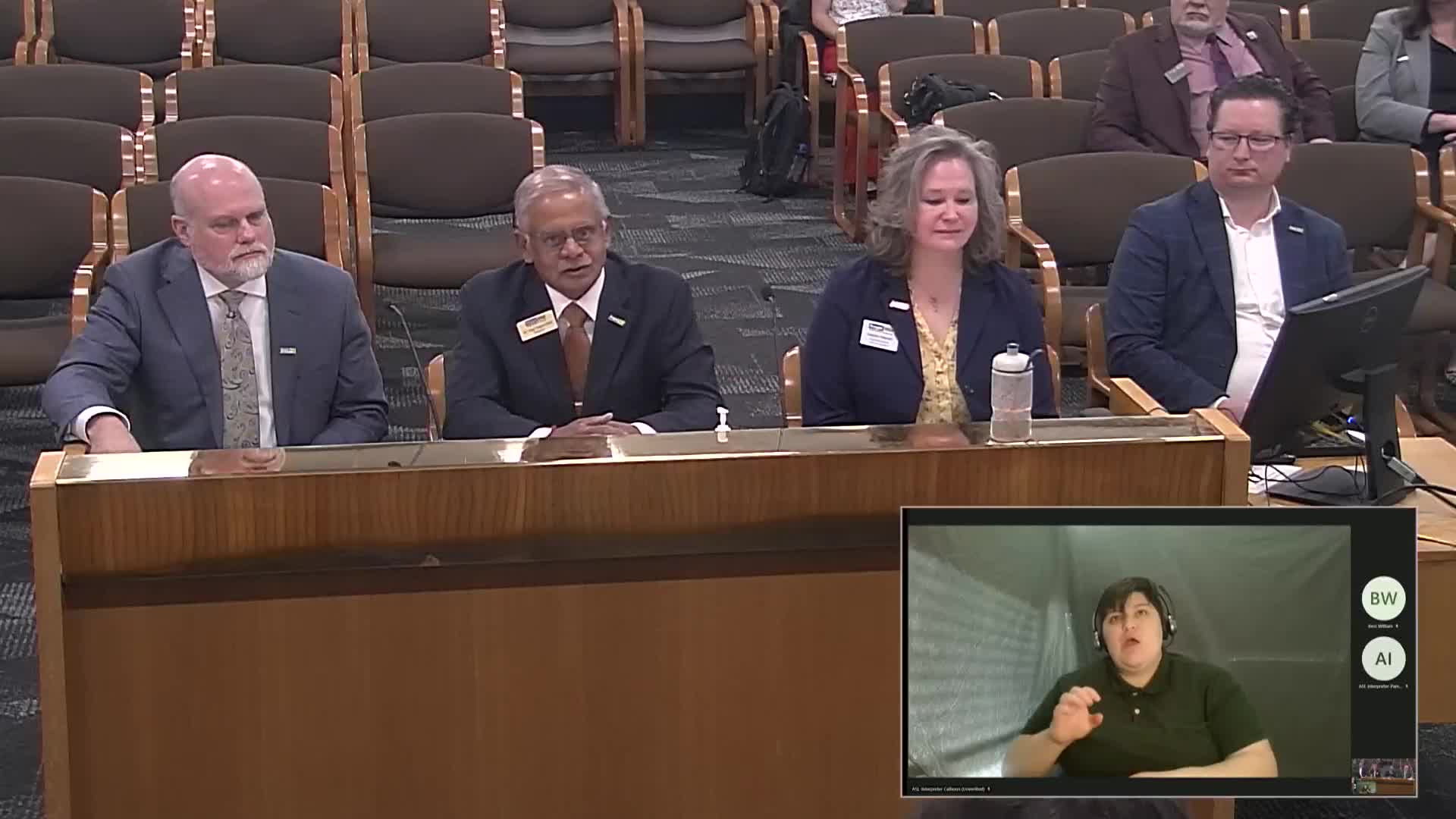Oregon Tech explores new medical school initiative with community colleges and local partners
April 17, 2025 | Higher Education, House of Representatives, Committees, Legislative, Oregon
This article was created by AI summarizing key points discussed. AI makes mistakes, so for full details and context, please refer to the video of the full meeting. Please report any errors so we can fix them. Report an error »

The House Committee on Higher Education and Workforce Development convened on April 17, 2025, to discuss critical developments in Oregon's healthcare education and workforce initiatives. The meeting focused on expanding clinical services and addressing the pressing need for healthcare professionals in both rural and urban areas.
The session began with discussions on existing programs that incentivize students from community colleges to pursue cost-effective solutions in healthcare education. Notably, the Salem Dental Hygiene program, co-located with Chemeketa Community College, has been a longstanding partnership that enhances clinical training opportunities. The committee highlighted the importance of expanding clinical services, particularly in dental hygiene and behavioral health, while acknowledging the challenges in fields like vascular and radiologic sciences due to the high costs of staffing qualified professionals.
A significant point raised was the need for innovative models to facilitate clinical rotations for students, especially in rural areas where healthcare access is limited. The committee emphasized the importance of local ambassadors to support primary care practices in these communities. The Area Health Education Centers (AHEC) program was mentioned as a potential partner to increase healthcare workforce development, particularly in rural settings.
Committee members expressed concerns about the accessibility of primary care providers, citing personal experiences of long wait times to find healthcare services even in urban areas like Eugene and Corvallis. This highlighted the broader implications of the initiative, which aims to alleviate pressure on existing health centers.
Funding for the proposed healthcare education expansion was a key topic. The committee discussed the need for a comprehensive planning study to outline the necessary capital construction and potential funding sources, including state support and philanthropic contributions. The timeline for establishing new cohorts of students was also addressed, with references to successful models from other states, such as Colorado's aggressive approach to medical school development.
The meeting concluded with a commitment to further explore these initiatives and the importance of collaboration among educational institutions and healthcare providers. The committee expressed appreciation for the vision shared during the session and the potential impact on Oregon's healthcare landscape.
The session began with discussions on existing programs that incentivize students from community colleges to pursue cost-effective solutions in healthcare education. Notably, the Salem Dental Hygiene program, co-located with Chemeketa Community College, has been a longstanding partnership that enhances clinical training opportunities. The committee highlighted the importance of expanding clinical services, particularly in dental hygiene and behavioral health, while acknowledging the challenges in fields like vascular and radiologic sciences due to the high costs of staffing qualified professionals.
A significant point raised was the need for innovative models to facilitate clinical rotations for students, especially in rural areas where healthcare access is limited. The committee emphasized the importance of local ambassadors to support primary care practices in these communities. The Area Health Education Centers (AHEC) program was mentioned as a potential partner to increase healthcare workforce development, particularly in rural settings.
Committee members expressed concerns about the accessibility of primary care providers, citing personal experiences of long wait times to find healthcare services even in urban areas like Eugene and Corvallis. This highlighted the broader implications of the initiative, which aims to alleviate pressure on existing health centers.
Funding for the proposed healthcare education expansion was a key topic. The committee discussed the need for a comprehensive planning study to outline the necessary capital construction and potential funding sources, including state support and philanthropic contributions. The timeline for establishing new cohorts of students was also addressed, with references to successful models from other states, such as Colorado's aggressive approach to medical school development.
The meeting concluded with a commitment to further explore these initiatives and the importance of collaboration among educational institutions and healthcare providers. The committee expressed appreciation for the vision shared during the session and the potential impact on Oregon's healthcare landscape.
View full meeting
This article is based on a recent meeting—watch the full video and explore the complete transcript for deeper insights into the discussion.
View full meeting
